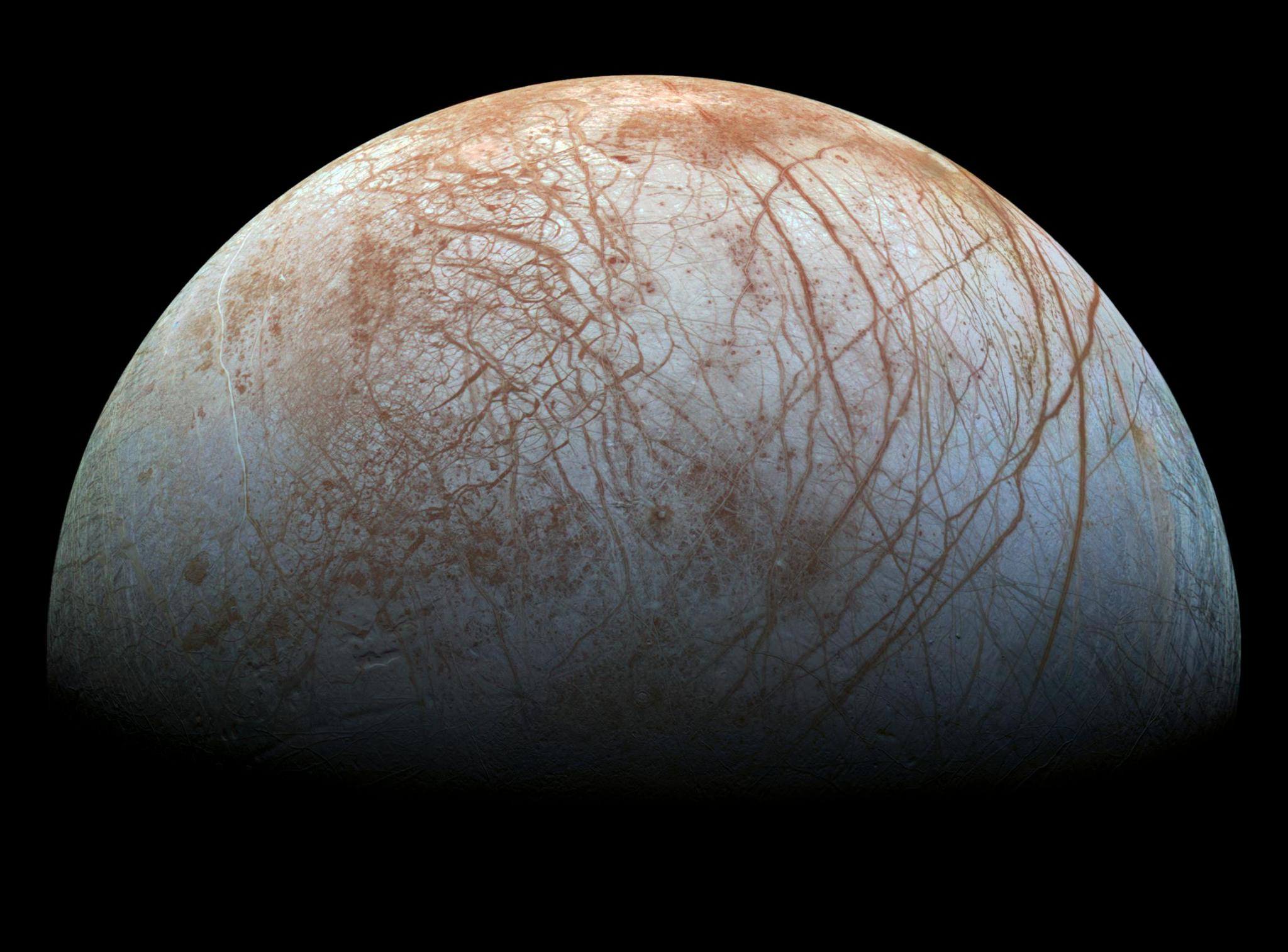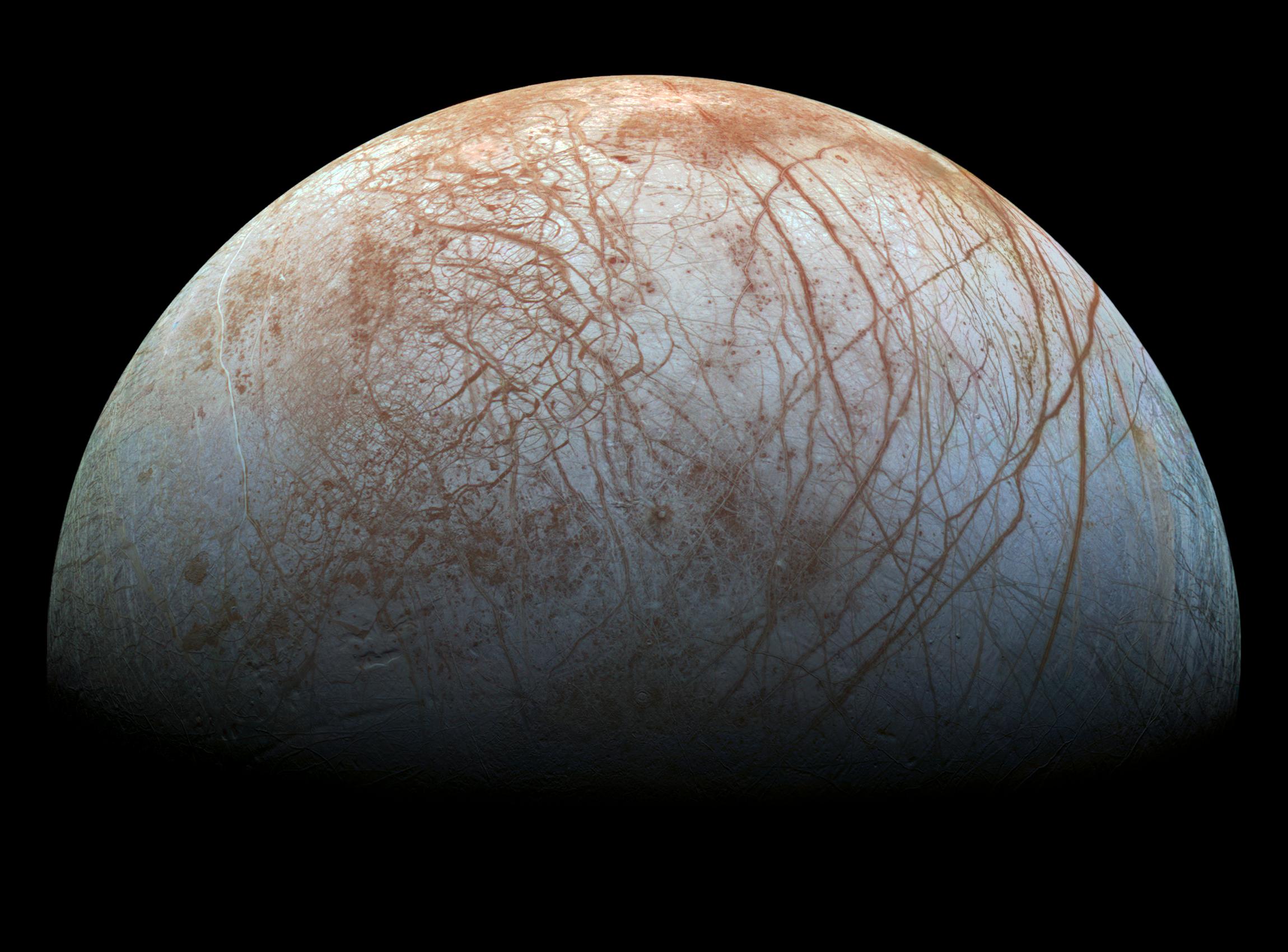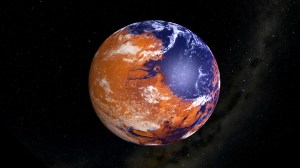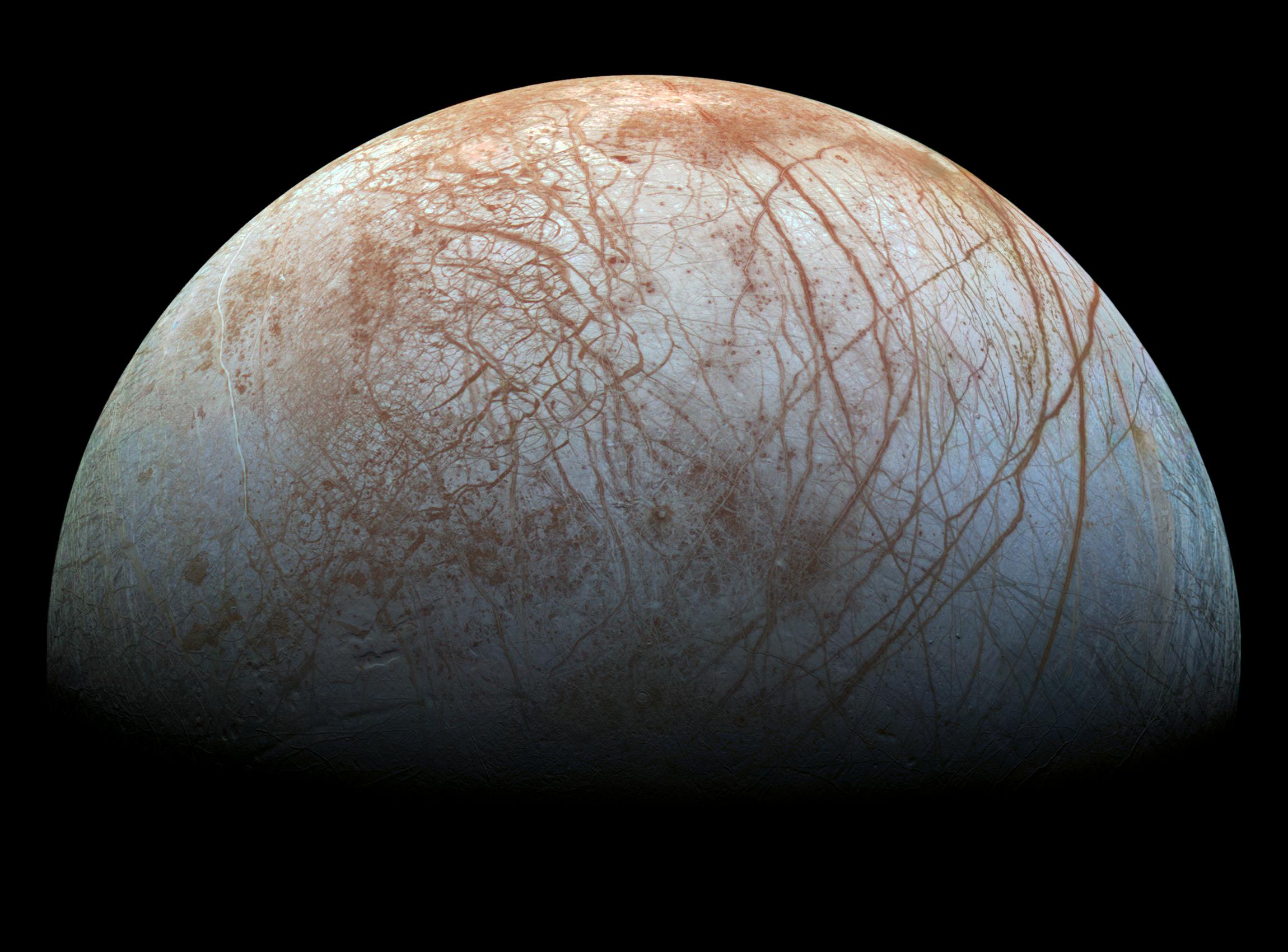2 min read
NASA-Funded Study Examines Tidal Effects on Planet and Moon Interiors NASA-supported scientists have developed a new method to compute how tides affect the interiors of planets and moons. Importantly, the new study looks at the effects of body tides on objects that don’t have a perfectly spherical interior structure, which is an assumption of most previous models.
 The puzzling, fascinating surface of Jupiter’s icy moon Europa looms large in this newly-reprocessed color view, made from images taken by NASA’s Galileo spacecraft in the late 1990s. This is the color view of Europa from Galileo that shows the largest portion of the moon’s surface at the highest resolution. NASA/JPL-Caltech/SETI Institute Body tides refer to the deformations experienced by celestial bodies when they gravitationally interact with other objects. Think of how the powerful gravity of Jupiter tugs on its moon Europa. Because Europa’s orbit isn’t circular, the crushing squeeze of Jupiter’s gravity on the moon varies as it travels along its orbit. When Europa is at its closest to Jupiter, the planet’s gravity is felt the most. The energy of this deformation is what heats up Europa’s interior, allowing an ocean of liquid water to exist beneath the moon’s icy surface.
The puzzling, fascinating surface of Jupiter’s icy moon Europa looms large in this newly-reprocessed color view, made from images taken by NASA’s Galileo spacecraft in the late 1990s. This is the color view of Europa from Galileo that shows the largest portion of the moon’s surface at the highest resolution. NASA/JPL-Caltech/SETI Institute Body tides refer to the deformations experienced by celestial bodies when they gravitationally interact with other objects. Think of how the powerful gravity of Jupiter tugs on its moon Europa. Because Europa’s orbit isn’t circular, the crushing squeeze of Jupiter’s gravity on the moon varies as it travels along its orbit. When Europa is at its closest to Jupiter, the planet’s gravity is felt the most. The energy of this deformation is what heats up Europa’s interior, allowing an ocean of liquid water to exist beneath the moon’s icy surface.
“The same is true for Saturn’s moon Enceladus.” says co-author Alexander Berne of CalTech in Pasadena and an affiliate at NASA’s Jet Propulsion Laboratory in Southern California. “Enceladus has an ice shell that is expected to be much more non-spherically symmetric than that of Europa.”
The body tides experienced by celestial bodies can affect how the worlds evolve over time and, in cases like Europa and Enceladus, their potential habitability for life as we know it. The new study provides a means to more accurately estimate how tidal forces affect planetary interiors.
In this movie Europa is seen in a cutaway view through two cycles of its 3.5 day orbit about the giant planet Jupiter. Like Earth, Europa is thought to have an iron core, a rocky mantle and a surface ocean of salty water. Unlike on Earth, however, this ocean is deep enough to cover the whole moon, and being far from the sun, the ocean surface is globally frozen over. Europa’s orbit is eccentric, which means as it travels around Jupiter, large tides, raised by Jupiter, rise and fall. Jupiter’s position relative to Europa is also seen to librate, or wobble, with the same period. This tidal kneading causes frictional heating within Europa, much in the same way a paper clip bent back and forth can get hot to the touch, as illustrated by the red glow in the interior of Europa’s rocky mantle and in the lower, warmer part of its ice shell. This tidal heating is what keeps Europa’s ocean liquid and could prove critical to the survival of simple organisms within the ocean, if they exist. The giant planet Jupiter is now shown to be rotating from west to east, though more slowly than its actual rate. NASA/JPL-Caltech The paper also discusses how the results of the study could help scientists interpret observations made by missions to a variety of different worlds, ranging from Mercury to the Moon to the outer planets of our solar system.
The study, “A Spectral Method to Compute the Tides of Laterally Heterogeneous Bodies,” was published in The Planetary Science Journal.
For more information on NASA’s Astrobiology Program, visit:
https://science.nasa.gov/astrobiology
-end-
Karen Fox / Molly Wasser
Headquarters, Washington
202-358-1600
karen.c.fox@nasa.gov / molly.l.wasser@nasa.gov
Details Last Updated Nov 07, 2024 Related Terms Astrobiology


 2 min read NASA’s New Edition of Graphic Novel Features Europa Clipper NASA has released a new edition of Issue 4 of the Astrobiology Graphic History series.…
2 min read NASA’s New Edition of Graphic Novel Features Europa Clipper NASA has released a new edition of Issue 4 of the Astrobiology Graphic History series.…
 5 min read NASA: New Insights into How Mars Became Uninhabitable
5 min read NASA: New Insights into How Mars Became Uninhabitable
 14 min read The Making of Our Alien Earth: The Undersea Volcanoes of Santorini, Greece
14 min read The Making of Our Alien Earth: The Undersea Volcanoes of Santorini, Greece
